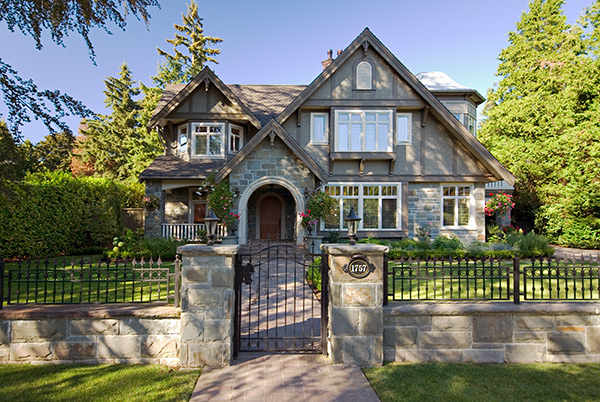
The following article is from Canadian Real Estate Wealth Magazine.
Landlords and homeowners alike have long sought to improve the use and aesthetics of their properties through
renovations.
Carrying out a home extension or addition, however, takes that commitment to the next level: the project timeline is
longer, the resources involved much more complex, and the funds required can reach six figures. For the
inexperienced renovator, this can create plenty of opportunities for costly mistakes.
But that doesn’t mean you should be dissuaded from taking on your own addition project. As professional
renovator Todd Senft explains, “The returns can be very rewarding – if the project is planned out well.”
“An addition to your home can be a very good way to add value, depending on what your home may be lacking. To
clarify the word ‘value’, I imagine the word to mean not only resale value, but also the existing homeowner’s
enjoyment of the added space,” says Mr. Senft, president of ReVision Home Custom Renovations Inc. in
Vancouver.
“Working with a real estate agent who knows your neighbourhood is always a good idea, as they can tell you
where the best area would be to add space to your home.”
For instance, they may be able to tell you that many of your neighbours’ homes have four bedrooms, and that four-
bedders are most frequently sought out by the families that populate the suburb.
“If your home only has three bedrooms then adding a master bedroom and ensuite may be the best value addition
you can add to your home. You have to keep in mind what types of buyers and renters live in your neighbourhood.
Are they young couples looking to raise a family, people getting into a ‘step-up home,’ or is it investors? That
information will have an impact on your decision,” he says.
The agent may also be able to tell you about recent sales of four-bedroom homes, which would give you an
indication of how much you should spend to stay within the price parameters of your neighbourhood.
This was the case for a condo project Mr. Senft oversaw in 2011, in the centre of Vancouver, near Granville and
12th Ave. Neighbouring high-end condos were selling for upwards of $700,000, so when Mr. Senft’s client was
able to secure a rundown condo for $480,000, he knew they were on to a winner.
“The client invested $150,000 into their home with a full renovation, right down to the framing,” Mr. Senft says.
“After the reno was complete, their real estate agent came over and indicated that they could put the condo back
on the market for $725,000 to $750,000. That was a rough profit of $95,000 to $120,000, less the usual expenses
that transpire when selling a property. It just shows you what you can achieve with a well-planned renovation in the
right neighbourhood.”
Why not just upgrade?
Whether you feel like you need more space at home to cope with the needs of your growing family, or you’re
looking for ways to maximize the returns on your investment property, there is an easy way to avoid taking on a
huge renovation and extension project: just upgrade.
From a financial perspective, you could sell your current property and take the proceeds of the sale, plus the cash
you’ve earmarked to cover the costs of your addition, and use to it to fund the purchase of bigger, more expensive
home. But as designer and renovator Paul Denys from Denys Builds Designs explains, there’s more to consider
than simply purchase and sales prices.
Mr. Denys estimates that the cost of moving for an average home in equates to roughly 10 per cent of a property’s
purchase price, once you consider all of the costs involved in buying and selling.
“The average house price in Ottawa is around $340,000, and if the cost of moving is about 10 per cent of that
value, you’re spending $34,000 – and you don’t recover an of that,” he says.
“As an alternative, you could spend that 10 per cent on your property and make it more enjoyable to use and live in.
With $34,000 to spend, it would roughly cover the cost of a medium to higher-end bathroom, an ensuite bath or a
very small kitchen.”
The cost of moving
|
Average 2011 home sale price in Ottawa *
|
$343,284
|
|
Land transfer tax (www.landtransfertaxcalculator.ca)
|
$3,625
|
|
Real estate commissions and fees (5-6 per cent)
|
$17,165 – $20,600
|
|
Survey
|
$600 – $1,000
|
|
Legal fees and disbursements
|
$1,000 – $1,500
|
|
Appraisal
|
$250 – $275
|
|
Home inspection
|
$350 – $450
|
|
CMHC insurance premium, if using less than 20 per cent deposit
|
$6,980 (assume 10 per cent deposit)
|
|
Removalists
|
$2,200 – $3,500
|
|
TOTAL – approx. 10 per cent the cost of the home
|
$32,170 – $37,930
|
Source: Paul Denys, www.denys.ca* Figure obtained from Ottawa Real Estate Board MLS Residential Sales
Where do you start?
If you’re keen to proceed with an addition to your home, you first need to carefully define what you want to
accomplish with your project, says Maribel Pelka, president and owner of Avant-Garde Properties.
“It may even be worth spending the money to have a basic blueprint of your idea created,” she says.
Mr. Denys, a licensed carpenter who has been in the industry for over 22 years, has overseen his fair share of
addition projects over the years and he has come up with one simple question to help you define your needs:
“What is your commitment to the property?”
“I’m told that in Europe, commitment to property is about five generations, as family homes get passed down.
Here, it is about seven to 10 years, and that is going to have a bearing on what you do and how you do it,” he
explains.
In other words, you need to consider your future plans before you get started. If you’re upgrading your dream
home, which you plan to live in for the next 20 years, then investing in a high-quality addition would increase your
home’s value, both financially and in terms of your enjoyment.
Alternatively, if you’re likely to move in the next few years, or you’re adding a room to your investment property in an
effort to boost your returns, you need to focus on the numbers to ensure your proposed addition makes financial
sense.
Upgraded kitchens and additional bathrooms are usually the best place to add value, Mr. Denys adds, even
though they are often the most expensive projects to execute, “because of materials involved, including tiles,
fixtures and appliances that drive costs up.”
“But, they are something we touch and use every day,” he says, “and they enhance our daily enjoyment.”





 English
English 中文(简体)
中文(简体)






